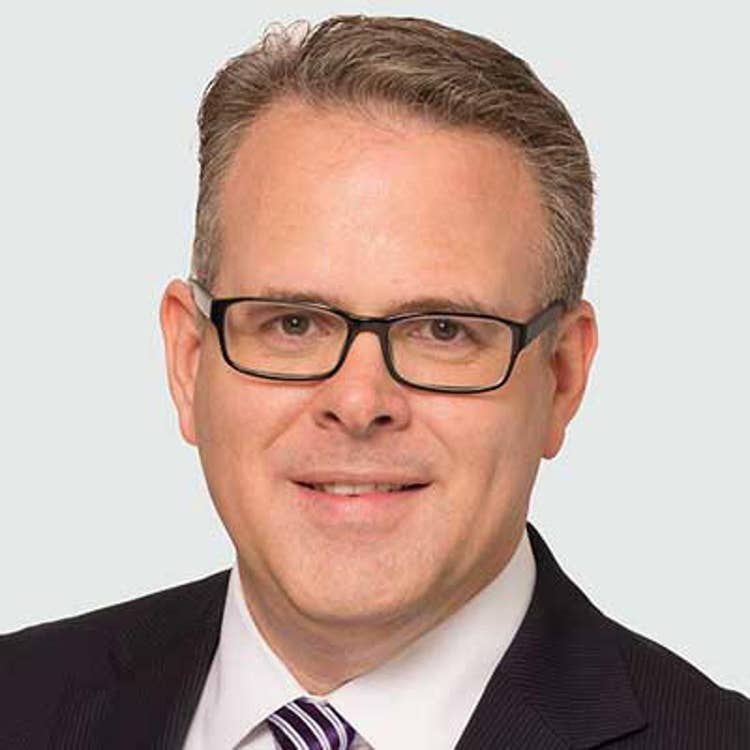Park Place Technologies: 8 Things To Know As Partner Program Debuts
Park Place Technologies, the largest third-party hardware maintenance provider that is also expanding into monitoring and management services, has been around for 30 years, and is finally getting ready to formalize the relationship with partners who already account for over 40 percent of its revenue. Here are eight keys to understanding the company.

30-year-old Park Place Launches First Partner Program
In the 30 years that Park Place Technologies has been in business, the company has grown organically and via acquisitions to become the largest provider of third-party hardware maintenance, a business that provides alternatives to purchasing extended support from the vendors of IT hardware that is out of warranty. Park Place now supports over 21,500 customers, including 445 of the Fortune 500 companies.
For Park Place Technologies, about 42 percent of its revenue comes via indirect channels. This is despite the company never having implemented a formal channel program. That is changing as Park Place is introducing its Uptime Partner Program. That program is led by Jeff McCullough (pictured), the former channel chief at storage giant NetApp, who now serves as the company’s global vice president of channel sales.
As Park Place moves to formalize its channels, it does so at a time of big change at the company. In particular, Park Place no longer wants to be known just as a provider of third-party hardware maintenance as it is now moving quickly to provide monitoring and management services on top of those contracts to give it and its partners new opportunities to bring value to companies who prefer to keep older but perfectly useful equipment in production past their warranty periods. It does so via its DMSO (discover, monitor, support, and optimize) framework that works across the entire IT infrastructure including on-premises and the cloud.
For a look at how Park Place Technologies is changing, click through the slideshow.

Park Place Technologies Is Not Just About Third-party Maintenance
Actually, Park Place is the largest player in the third-party maintenance space, with a 30-year history in the field. However, said Dave Cox (pictured), the company’s chief operating officer, the company is trying to change the perception around how it is viewed in the market.
“We’re working to change the perception of Park Place to be not just a third-party maintenance company,” Cox told CRN. ”You should almost think of our business as two pieces. We’ve got the traditional core third-party maintenance business. But when we talk about that DMSO framework and all the additional services and software that we’re driving, they surround and build off that core.”

Not Just Hardware
About 5 percent of Park Place Technologies’ business comes from professional services, but that is a fast-growing part of the business, Cox said.
Kathie Lyons, executive vice president and general manager of the company’s ParkView services business, said that, outside of the hardware maintenance, Park Place has two other offerings: ParkView Managed Services and Entuity Network Monitoring and Management Software, both of which tie into the company’s DMSO (discover, monitor, support, and optimize) platform.
The technologies discover everything in a customer’s IT infrastructure, including physical assets, virtual assets, and software, all the way out to the end user devices. They also monitor the hardware to automate processes related to maintenance, Lyons told CRN.
“As part of our server management services, we can monitor the customer’s operating systems as well, including Linux, Unix, Windows, and VMware,” she said. ”And our network monitoring and management service utilizes the Entuity software to monitor and manage the software as a managed service for our customers.”
On the support side, Park Place provides server and network management, Lyons said. Storage management will be available next quarter, she said.
Park Place is also planning to offer in the near future the technology to optimize capacity management, CPU utilization, and cloud cost control, Lyons said. “We’re building up our optimization services right now on top of our management services,” she said.
Park Place also provides a portal that lets customers see what assets are under management, what is connected or disconnected, and what needs review, Lyons said. “And we actually have given them full capabilities to deploy their own hardware monitoring that they would use as part of their third-party maintenance solution,” she said.
Park Place has over 2,800 ParkView Monitoring customers and over 125 ParkView Managed Services customers, Lyons said.

First Formal Channel Program
Park Place Technologies this week unveiled its first formal channel program, the Uptime Partner Program, aimed at supporting the company’s goal of helping its channel partners be customer heroes, McCullough told CRN.
“When our partners are engaged, when they’re talking about these services and solutions, that we offer, they’re really talking about big problems,” he said. ”The customer doesn’t have enough budget to pay for the maintenance part. The customer doesn’t have enough people to support all the assets they have. They can’t afford projects because their dollars are invested in their maintenance contracts.”
Park Place has about 1,300 channel partners globally who account for about 42 percent of the company’s total business, McCullough said.
“This business has really grown organically,” he said. ”It’s really come from customers asking us to engage and work with partners.”
Park Place Monday unveiled its first global program around the channel after years of working with partners with not program, McCullough said.
“We built a really health channel business without necessarily stating that it’s a core component of the company.... We’re stating to the market that the channel is critical to our business, and we want to continue to expand and grow our footprint with our partners,” he said.
McCullough said Park Place’s new channel program has three primary focuses: profitability with 20-plus points of front-end margin, transaction ease to close deals quickly, and differentiation in that the company offers a multi-vendor alternative to extended service agreements from the OEM vendors.
Margins are stackable, with channel partners able to add monitoring, management, and discovery on top of the hardware maintenance agreements, McCullough said.
The Uptime Partner Program brings partners in at one of three levels, with benefits based on partner commitment to the program, he said.
The company also offers specialization tracks to partners, starting with network management. Partners also get paid for contract renewals, and have access to a portal for registering deals and accessing co-branded assets, he said.

Global Reach
Park Place Technologies has offices and parts stocking locations around the world, Cox said. This includes over 2,400 spare parts locations that support over 1 million assets across over 110,000 unique data centers in over 150 countries worldwide.
That global reach is important, Cox said.
“Customers want to deal with as few partners as they can to support needs,” he said. ”We want to be where customers are.”
While having over 2,400 spare parts locations seems like a boring statistic, it’s not, Cox said.
“At the end of the day, we resolve about half the calls that come into us without parts replacement, and half the calls we get do require a part,” he said. ”If you’re going to have a four-hour SLA (service level agreement) with a customer, that means you have to have parts relatively close. You have to understand what’s on the contract, what parts will be required, what’s got to be held locally, what’s got to be held centrally, etc.”

Growth By Acquisitions
Park Place Technologies has been busy in the last five years on the mergers and acquisitions front, acquiring 15 companies during that time.
The company’s 2020 acquisition of rival Curvature was by far the biggest.
“In 2020, we effectively doubled our business with the acquisition of Curvature, who was our next biggest competitor and at the time the only other TPM (third party maintenance provider) that we viewed as having similar global scale and reach,” Cox said.
Other acquisitions in 2020 include those of IntelliNet’s NOC (network operations center), significantly expanding its reach outside the third-party hardware management space, and Custom Hardware Engineering & Consulting (CHE Consulting) to help its data center maintenance business.
“Park Place grew up in the SMB space,” Cox said. ”Lots of small customers, relatively small transaction size, etc. And as we’ve gotten bigger, we became more attractive to the Fortune 500 who, as you can imagine, they’re the ones who have assets all over the world. And so, as we’ve grown globally, and as our OEM coverage continues to grow as well, we have a pretty attractive alternative for these folks compared to the OEMs.”

OEM Rivalry
Some of the biggest competitors to Park Place Technologies is the OEM producers of the servers, storage, and other data center equipment. Customers looking to extend support for equipment coming out of warranty have to decide whether to purchase extended contracts from the OEM manufacturers or via a third-party maintenance provider like Park Place. Park Place, in turn, needs to get parts and expertise from channels other than those OEMs.
Most of the equipment Park Place supports is on the secondary market, and may range from three years old to over 20 years, Cox said.
“Oftentimes, the parts we’re using aren’t even available,” he said. ”We’re talking about gear that’s been out in the world a while. The vast majority of our spare parts come from the secondary market where we have vendors that specialize in that. As you could imagine, as folks refresh equipment, they get rid of the old equipment, and that goes to a vendor to be torn down and disposed of, and that creates a spare parts supply.”
In terms of technical talent, most of the engineers at Park Place came from the OEMs, Cox said.
“They are super talented folks looking for an alternative,” he said. ”They come work for Park Place. We’re not competing with the OEMs on gear that was released last week. ... We’re looking at things that have been in the market for at least three years, so there’s time for those skillsets to be circulated to a broader set of the population.”
The biggest advantage Park Place has over OEMs is that it is a multi-vendor service provider, Cox said.
“If you’re client, and you’ve got five to ten different OEMs you work with across storage, server, and network, you need to have five to ten different maintenance contracts,” he said.
Furthermore, he said an OEM will monitor only its own equipment. Also, he said, OEM prices are 30 percent to 40 percent higher than those of Park Place.

First Time Fix Guarantee
Park Place Technologies recently released what it calls its First-Time Fix Guarantee for hardware monitored by ParkView Hardware Monitoring and under an active Park Place Technologies maintenance agreement. Cox said.
It is often logistically difficult for customers to schedule a maintenance window, Cox said.
“If you take advantage of our ParkView Hardware Monitoring [offering], we guarantee we will fix your problem the first time, as defined by not having to come back within five days [for the device],” he said. ”And if we fail to do that, then we give them a one-month credit against our service. It’s putting our money where our mouth is in terms of our ability to get things right the first time. You can imagine how important that is for customers, because it all comes down to their equipment not running.”

Support Limitations
Park Place Technologies supports nearly 1.1 million different technology storage, server, and networking assets from most manufacturers, but not everything, Cox said.
What the company does not cover is not necessarily related to the age of the equipment, he said.
“It tends to be tied to, are there parts available,” he said. ”So sometimes things that are very new may not yet have parts, or things that are very old may not have parts available. Or we may not have the technical expertise. Or, is there some sort of software licensing component that’s integrated with the hardware maintenance that might cause challenges for us to support. It’s not frequent, but there are contracts that we have to say no to.”
It’s important to be up-front with the customer, Cox said.
“There’s no scenario that ends well if we say, ‘Yeah, sure, we can support that,’ and just hope for the best, and then six months later, we’re in a challenging situation,” he said.